There is a lot of Turkish surplus 8mm Mauser ammunition on the market here in the US. It used to be super cheap (under 5c/round), but in the last few years I have seen it selling for more like 30c/round. It’s usually the least expensive option for 8mm ammo, and it can be identified by its Turkish crescent in the headstamps, one-piece brass clips, and crude bandoliers (7 pockets with 2 clips in each). Whenever I am asked, I always urge people to not use it in self-loading rifles. It is safe enough in bolt actions, but that’s IT. One would be better advised to buy it only for the projectiles (or really, just don’t buy it at all).
Why? Because it’s overpressure and has bad primers (lots of hangfires), thanks to poor storage over the decades. I believe the powder granules have deteriorated and the surface area increased, leading to a much faster burn rate than when originally made, and thus excessive pressure.
Now, I have encountered plenty of people who claim to have fired thousands and thousands of rounds of Turk surplus without any problems. I have no doubt that they are telling the truth – but the very next round could well change that streak for them. I have one friend who is missing a couple fingers from an incident in which a round of Turk surplus he thought was a dud detonated while he was ramming it out with a cleaning rod – the rod took off his thumb and the bullet took two more fingers.
I am aware of at least half a dozen machine guns damaged or destroyed by it as well. Too many machine gun owners are penny wise and pound foolish, spending tens of thousands of dollars on historical machine guns and then firing the cheapest ammo they can possibly find (ie, Turkish surplus 8×57). This came to my mind recently when I noticed that a friend had a remnant from a repair job on a caliber-converted (because cheaper!) Browning 1919 that had its sideplates ballooned open by Turk 8mm. Here’s the top cover:
Yeah, it’s supposed to be flat.
Please, guys, don’t use this ammo. If you absolutely must, then stick to bolt action Mausers, and understand how to handle hangfires safely. But don’t let this be your 1919 or MG34 or MG42 or FN49 or G43 or Hakim. Or your fingers.

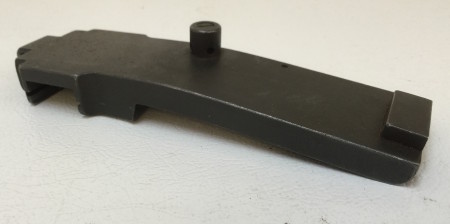
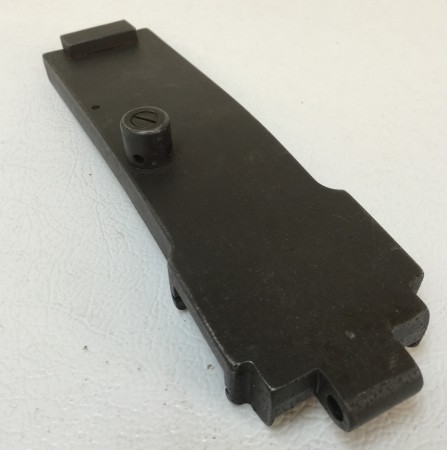
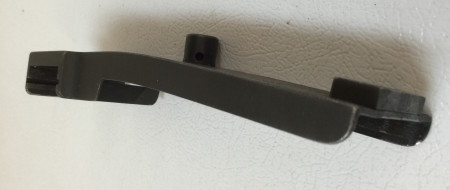
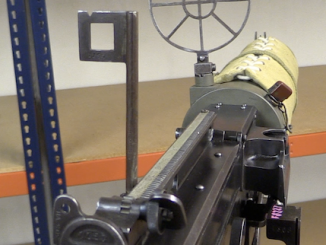
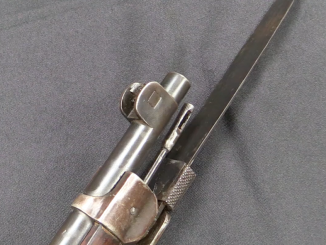

I bought some surplus ammo a decade ago – Yugoslavian manufacture I think – for my Mauser. After one round I had to tug hard to get the bolt to open.
I was told I had bought machine gun ammo – identifiable by 3-4 longitudinal crimps by the mouth case – that was loaded to a higher pressure.
Fired it through a VZ24 no problems went bang every time. No split casing and the strippers worked like they should. Still thanks for the heads up.
Yep I left a case of the stuff out there on one my last few trips with the idea of selling it to whoever wanted it at a sacrifice price. I think it’s still collecting dust in one of Karl’s store rooms lol.. if he does manage to unload it I’ll probably let him keep the $ for the inconvenience. I originally bought it for use with a G98 that needs a ton of work.
About fifteen years ago, someone I knew was putting Turkish 8x57mm ammo through his Gewehr 88 (he even called it was a Mauser), and not understanding why he had ruptured cases, stuck cases, hangfires… He asked if I wanted to shoot it while he fired my ’03 Springfield. I told him I wouldn’t shoot it on a double dog dare. I heard later that he had to take it to a gunsmith to get a new extractor and have another broken case extracted. He always blamed his “Mauser”.
He was firing full boat 8 X 57mm JS through an 88 Commission rifle? Very brave or foolhardy.
Thank You for the Post! I have a Yugoslavian M48A bolt action and was given several rounds with Rifle purchase. From your comments and knowledge it’s safe to use just need to clean gun properly after usage. Or just stick with Sellier&Bellot
good and timely advice.
I’ve had a .22rf go off in my hand (don’t ask! just do not ask!) that was scary enough, a hang fire deciding to split open a centrefire rifle case – that’s nasty.
I was reading a little while back about a wildcatter who was extending the Julian Hatcher experiments to see which cases would remain in a chamber during firing without any case head support. He chronographed some of the ones that came out the back, and was getting from 1900 FPS upwards, several rounds ejected their cases at well over 2,000 FPS,
so, WAY MORE than magnum pistol performance out of the back end
for goodness sake keep that bolt closed, the muzzle aimed at the backstop and summon the range officer…
A few years back there was a problem with some OFV headstamped Indian 7.62 x 51 (.308) I don’t know the reason, but gather that it caused some KBs.
The source for wildcatter chronographing unsupported cases ejecting out of chambers
I’ve chopped the http: and //www. bits off the front so I don’t fall foul of the spam catcher here
shootersforum.com/wildcat-cartridges/5813-article-posted-precision-shooting-website-about-ackley-improved-cartridges-2.html#post36325
Was it Oscar Wild who described a horse as
“Dangerous at both ends, and unpleasant in the middle” ?
Amen.
This does remind me of just how moronic the users of the 3D printables are.
Let’s see now…the description is; A metal tube, closed at both ends, filled with an explosive material and equipped with a device to explode the metal tube on demand, right?
That is a description of a pipe-bomb.
Now, let us load said device into a thermoplastic construct and, just make it interesting, hold the construct pressed against the face and…
Can anyone see how this is probably a real, real bad idea?
Antique firearms and antique ammunition are easily an equally poor mix.
Special extra-credit assignment for today; Contemplate why Thermoplasic and Firearms are likely also a poor mix.
The numerous causes of KBs
a round or box that has been sat rattling on a hot spot on the pickup floor for a season, or even just in the cab for a summer.
a bunch of slightly tarnished loaded rounds that someone put through the vibro case tumbler to shine them up…
smokeless makes expensive slow release plant fertilizer, but it might still be cheap in that role, compared to some of the other things that can be done with it.
I’ve always been told that it’s only safe to shoot out of bolt action rifles. I bought a ton of it awhile ago and only had 2 hang fires out of 500 rounds. I never realized how hot this ammo was until I fired some Yugoslavian and Bulgarian surplus ammo. In comparison The Turkish ammo makes the other ammo feel like the recoil of an Ak.
I won’t use the Turkish, Romanian, or Egyptian. Too much poor storage, heat, and moisture. Not worth blowing me or my firearms up to save a penny.
I’ve got a bunch of Romanian surplus 8mm that will not go boom in my Turk M38 with a new Wolf 26 .lb firing pin spring but new manufacture PPU works as it should. Other than recent Yugo made 8mm I shy away from surplus 8mm.
I used to run Turkish ammo through my Yugo mauser, but after shooting some ppu 8mm and feeling the difference I stopped.
Keith,
Are you going to War and Peace?
What do you actually pay for ammo in the States?
In Denmark, we usually pay a s-load for ammo:
50 Magtech 9B: $12.00 / pack
8×57 German Surplus: $0.60 each
8×57 PPU: $1.20 each
What are your guys paying?
gunbot.net tracks most of the prices.
Thomas, please try http://www.ammoseek.com. It is similar to Nanashi’s recommendation of gunbot.net, but is more comprehensive, right down to individual suppliers with real-time ammunition inventory updates to within the last minute or so, and covers virtually every ammunition vendor of any size in the United States.
higher
I’ve shot some and not been impressed by it, though it may not be as bad as some Bulgarian I also shot which was almost all duds and hangfires. Got through 7 rounds and gave up on that, maybe it was just a bad lot but at least my Turk fired. That said at current prices of Turk at local shows I’d rather hand load or spend a little more for some Yugo M75 which is fantastic.
I certainly agree I’d never run it in a semi or full automatic gun, always felt uncomfortably hot to me in a bolt action. I do however still have a bunch of examples of the Turk from ’39 to ’45 as plinking ammo/components but am not sure I want to shoot it; in particular all the 45 is set aside to be pulled down as for some reason I don’t hear any powder inside when shaking it.
This cautionary tale should apply to all aged ammunition, not just Turkish 8mm x 57 ( or 7.92mm x 57 as the case may be ). I am reasonably sure that the ammunition itself was reliable and perfectly functional until subject to the long-term rigors of poor storage practices, which would generally affect most types of ammunition in a similar fashion.
Hmm… I wonder how a rechambered Japanese Type 38 Rifle would have dealt with Turkish 8mm…
“Japanese Type 38 Rifle”
Depends on quality of particular example, war-time production Arisaka (and not only Arisaka) rifles tends to be lower quality than peace-time. However it must be noted that good quality Arisaka is thought rifle. American wildcatter P.O.Ackley run some test (in 1960s) trying to destroy various military rifles by rebuilding rifles to .270 Ackley Magnum and using too heavy powder charge:
http://dutchman.rebooty.com/temp/Ackley.pdf
One 6,5mm Arisaka was destroyed after loading with 70 grains(!) of powder
Arisaka’s are BEASTS. If you want to play around with sketchy loads, starting with a solid Arisaka pattern is not a bad plan.
One moron reamed a Type 38 to a .30-06 chamber, and then complained he was experiencing excessive recoil and evidence of high pressure. Yup, he was swaging .30-06 bullets to 6.5mm like a squeezebore.
Eventually, it ended up in the NRA’s hands, who sent it to a ballistic lab for testing. No detectable damage to the gun, but the recovered bullets looked like pencils and the muzzle velocities were insane.
25 plus years ago I didn’t know the difference from one surplus round to another but this Turkish ammo was about 9 bucks for a whole bandoleer of 70 on strippers as mentioned in this article. I was shooting them in a Hakim, which luckily I still own. I broke 2 extractors and it didn’t matter if the gas adjustment was dialed down. I feel very fortunate that extractors were the only thing it cost me. I still have about 140 rounds tucked away for bolt action Mausers if I decide to use it. I probably won’t.
My brother was shooting brass cased Turkish surplus in his Hakim when one finally blew out. The case that was on unsupported part of the chamber, blew out. The magazine was the weakest part and blew the bottom off the mag(luckily). It apparently caused the whole receiver to swell for a moment, because it split the stock at the wrist. It was very exciting. The same problem glocks experience with hot/reloaded ammo.
I have to ask. Keith what happened with the .22rf? Come on, you can tell us.
I’ve grown greyer in the thirty odd years since then, and hopefully a little bit wiser too.
Keith, on a scale of 1-10, how stupid was the thing you were doing when the thing with the.22lr happened? 😛
500 shot through a Swede and a Turk. Nary a problem but then again with the numbers of Turkish rounds out there, I would not dispute the warning. Never seen a warning quite like this though, makes one wonder on the provenance.
I didn’t realize any of this stuff was still around. Few weeks ago I found a stripper clip of it in my garage, laughed about it while I had some friends over “hey remember this stuff”. Most of it that I remember, about 80% of the cases had cracked necks, about 5-10% had necks that were cracked so bad they wouldn’t hold the bullet in the case. The first batch of ammo we got wasn’t bad, but was far from great, it was an earlier batch that was mostly clean, came with a plain brass stripper clip, but otherwise looked like the german stuff of similar vintage. The second round as as you describe, with the single piece clip, rounds were badly stained, case mouth cracks were even worse.
A decade ago when it cost more to ship than buy, eh, I guess I understand people shooting it. There’s still a ton of romanian surplus out there, not great for the bolt guns, but shoots great in auto-loaders.
Gotta’ ask yourself. “Do you really want to hold your face up against this stuff and pull the trigger?
Ian, How old of ammo our we talking about? Turkey stopped using Arabic script under Attaturk in the 1920s. I don’t think ammo that old should be used for any firearms.
Really old ammo can be a problem. Especially from placesm like the Com-bloc and other third world countries. If the powder is not properly made it will attack the cartridge case and eat it away from the inside. I saw this in VN with some 1950s 50 cal ammo came in lighter than OD green cans.So even old US military ammo is totally “safe” The powder can also degrade and cause pressure “variations” that may or may not cause damage to the shooter or the firearm. Hangfires related to a weak primer are EXTEMELY dangerous as poor initial ignition can disable the burn rate inhibitors and this makes the powder into an HE and it will destroy firearms and hurt people.
I think you actually meant to say that even old US military ammo is NOT totally “safe”. At least that seems to be the impression I’m getting based on the general context of your comment. You made some very good follow-up points too.
This example of dangerous ammo reminds me of “Project Eldest Son”, the Vietnam-era strategy of seeding a tiny amount of boobytrapped ammo into the enemy’s supply chain — one exploding cartridge at a time — in order to create the perception (or misperception) that the ammunition itself (all of it) was simply unpredictable and untrustworthy.
http://www.modernforces.com/uniform_italian_green.htm
The same kind of covert operations have been deployed in Iraq and Afghanistan, and possibly many other conflicts around the world. We can only wonder how much of this boobytrapped ammo ends up coming back into the United States as “foreign” military surplus, and then when the occasional hunting rifle blows up, the “accident” gets brushed off as decomposed gunpowder or other natural event.
If it’s Turkish and written in Arabic script, it’s pretty old — Ottoman vintage. Kemal Atatürk and the Young Turks forced a change to Roman script shortly after forming the republic, certainly by 1930. It might have taken a while for ammo manufacturers to catch up, but there’s no way this is late ammo, and it could well be WWI production.
I’ll shoot 100-year-old guns (after an inspection), but 100-year-old ammunition is another thing entirely.
Ack – my mistake. I was thinking of Iranian headstamps when I wrote this for some reason. The Turkish ammo is identifiable by the crescent in the headstamp (much like the crescent property mark on Turkish rifles). I changed the test to reflect this.
Back in the ’70s, a friend bought a case of FN headstamped .30-06. I would say conservatively, that 60% of them were hangfires, with the rest being a mixture of good rounds and complete duds.
Back in the ’80s, there was a surplus vendor who advertised in “Shotgun News”.
He always had lots of 7.92x57mm and the like.
A friend of a friend ordered some 7.92 from him. Mixed in with the 7.92mm was an unknown quantity of 7.7x58mm Japanese.
I also heard that he had a habit of tumbling tarnished/corroded live rounds in a cement mixer full of sand. Supposedly this altered the configuration of the powder grains, substantially speeding the burn rate… and chamber pressure.
I haven’t seen their ads in a VERY long time. I don’t know if he was sued out of business or he used his own ammunition and accidentally blew his head off…
Hi, Chris ;
Great to hear from you. I’m not sure if the mechanical tumbling you mentioned would actually alter the physical properties of the cartridge powder ( unless it had deteriorated to the point where it had become unstable anyway, the tumbling simply adding to the existing instability ), but I can see why said vendor resorted to the tumbling in a cement mixer full of sand — he probably thought this was a cheap and easy way to clean and polish the cartridges externally so that they would look that much more presentable for sales purposes.
Tumbling would grind the powder against the other powder, and create a lot of very fine powder dust — dramatically increasing the pressure curve.
I have shot many cases of the Turkish 8mm Mauser through my 1919A4 and 1919A6 back when we were building 16inch barreled 1919’s. the Turkish ammo had one massive flash to it, and I had one top cover looking like a banana from one, which was a very simple fix at the range. you simply placed a piece of wood on the top cover while still on the receiver and smack it a few times with a BFH (aka big hammer) and it’s ready to go. that’s the thing about the 1919’s… you can easily fix them with big hammers, and a screwdriver to set the headspace.
if I remember correctly, there were three lot dates and the middle one seemed to be the best, BUT you always inspected for split necks and loose bullets and rejected them and fired the rest
Old thread, but I’d like to throw a marker down on, “Don’t use old milsurp Pakistani ammo, either,” for the same reason. The only point in buying Pakistani Mk7z ball is to pull the bullets, pop the primers, remove the primers, and covert the old cases to dummy cases with a stick to keep the bullet from being pushed into the case.
I’ve had a decent amount of experience with Turk ammo in my k98k, from headstamps ranging from the 30s through the 50s (If I remember correctly? Certainly 30s and 40s). As a guess, I’d say over 500 rounds. It’s fine in the mauser, but luckily I guess, my mismatch rifle had a straight-handled bolt put in at some point. The Turk ammo is HOT, and sometimes you really need to smack the bolt handle to cycle it. Some years propel that 154 gr bullet at 3300-3400 fps.
I have several bandoliers left, and just shot some of it recently. I actually don’t recall ever having a hangfire, dud, or split case mouth. I also have a Hakim, and you need to know that you should NOT fire it out of that, even on the lowest gas setting. Same probably goes for all semi autos.
Stripper clips on Turk ammo can range from buttery smooth to terrible, depending on batch. I can say though that the best clips I have out of all the surplus I’ve used came from some of the good years of Turkish bandoliers, and I’m fairly sure I’ve tried most countries’ surplus ammo save German, Egyptian, and Iranian. Considering that 8mm stripper clips of unknown quality now run $2-$3 each, I’m glad I have them.
to all, thanks for all this info. Just bought a 1943 Mauser and was looking for ammo which is presently in short supply except for the Turkish stuff. Glad I checked and did not buy any of this ammo.
I still am sitting on half a case or so of the stinky Turk ammo, which I reserve solely for use in my Turk “Ankara 1945” Mauser. Other than a few split cases, no problems- so far.
I still am sitting on half a case or so of the stinky Turk ammo, which I reserve solely for use in my Turk “Ankara 1945” Mauser. Other than a few split cases, no problems- so far. Won’t use it in any of my “good” Mausers but it does well in the Turk. It does seem “hot” but I’ve never chrono’d any of it.
I still have several crates of Turkish 8mm ammo from the ’30s to the 50’s if I remember correctly. I stopped shooting it in the transferable 1919 many years ago due to bent top covers. A few years later I began shooting it in an M48A Yugoslav Mauser and noted a harsh recoil. So much so that since then when I’m bored and think about it I’ll pull the bullets and dump 4 or 5 grains of powder then reassemble the cartridge. This makes for a much more pleasurable time at the range with the M48A. I haven’t had the 1919 out for quite a few years but if I do take it for a run I’ll try out a belt of the downloaded Turk ammo and see how it goes.
I took apart a bunch of this ammo and reloaded it into boxer primed cartridges reusing the powder and projectiles.I noticed that the average charge was around 48gr and if you tried to put that into the boxer primed cartridges it would over flow the case. 44gr of powder would fill it to the bottom of the neck. i used 43.5gr of powder and had a very accurate round. the chrono showed around 2500ft/s.